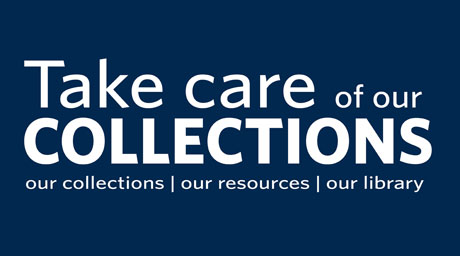
April 21 to 27 is Preservation Week. We asked Alvan Bregman, UBC Library’s Head of Technical Services, and Preservation Librarian, to answer a few questions on what preservation means at UBC Library.
- Read more about UBC Library’s preservation efforts, including the development of the B.C. Integrated Research Library, in “The fight against mould, rot and decay,” in the April issue ofUBC Reports.
- Listen to a segment of CBC’s On the Coast with Stephen Quinn featuring Alvan Bregman (interview begins at 39 minute mark).
- Get involved – participate in the American Library Association’s Preservation Week from April 21 to 27.
- Learn more on how to protect your family treasures, courtesy of the Library of Congress.

What is a “preservation culture,” and why is it important to develop one at UBC Library?
We spend a lot of money acquiring items for our collection—we need to ensure that items are accessible, and are in good condition for as long as possible. A damaged book that must be taken out of circulation is of use to no one. By creating a “preservation culture” within the library, I mean building a concern for the preservation of our collections into all our policies and procedures.
That means finding ways to eliminate practices that are detrimental to library materials. For example, we should always use bookends to keep our books upright. To do this means we might have to pay a little more attention or rethink how we organize our shelves. If we are successful in creating a “preservation culture” then everyone will feel responsible to straighten books if they see them leaning on the shelf, and we would make this simple for people by having bookends on every shelf. That’s only one small example.

What are the top 3 priorities of the UBC Library preservation program for the upcoming year?
The top three priorities for the preservation program is to develop the new Preservation Unit within Technical Services, to provide a framework for stabilizing all material designated for high-density storage, and to provide training and education to staff and library users.
Before coming to UBC, you worked at the University of Illinois’s Rare Book and Manuscript Library, where you implemented a preservation program. What was the most significant challenge you observed when the preservation program was being implemented?
The most significant challenge in implementing a preservation program at Illinois was the scale of needs. Illinois was exceptional because the buildings were generally much older–compared to what we have here at UBC. The keys to success at Illinois were effective long-range planning, finding people with the right professional background, getting strong support from the library administration for preservation and conservation initiatives, and securing endowment and grant funding for a first-rate conservation lab.
Which organizations do you look to for the highest standards in preservation and conservation?
Within Canada, I look to the University of Toronto as a model and to the Canadian Conservation Institute for research and the provision of standards. In reality, though, one must look primarily to the United States, where there are many institutions and associations eminent in the field, such as the Library of Congress Preservation Department.
Earthquake preparedness is part of UBC Library’s Disaster Recovery Plan; what are the most important points for Library staff to keep in mind?
I would advise everyone to take disaster preparedness very seriously. The first element in our Collections Recovery plan is human safety. Once buildings are declared safe, our plan defines a structure for dealing with disasters, should they strike. The plan also contains information on handling affected material, who to call, etc. One of the steps we are currently taking is to create triage lists, so we know what material we consider irreplaceable or highly important.